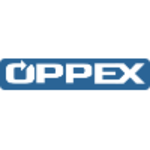How We Started A $480K/Year Service That Lets People Manage Their Digital Inheritance
Hello! Who are you and what business did you start?
My name is Ana, and I’m the CEO of the global digital inheritance document and password manager DGLegacy.
DGLegacy is a password management and asset protection digital inheritance service through which, in the case of an unforeseen event happening to you, people whom you designate as beneficiaries will be proactively informed about your assets and will be able to identify and locate them, thus minimizing the chance of an unclaimed asset.
We are solving the multi-billion dollar global problem of abandoned assets. These are assets that stay in insurance companies, banks, cryptocurrency wallets, and asset management companies after their owners pass away, instead of reaching the rightful beneficiaries.
In just one year after the launch, we have already 5000 subscribers, with a strongly increasing rate of growth.
Product overview video:




